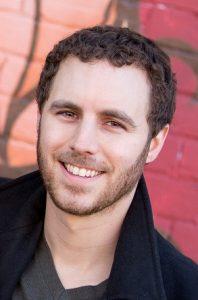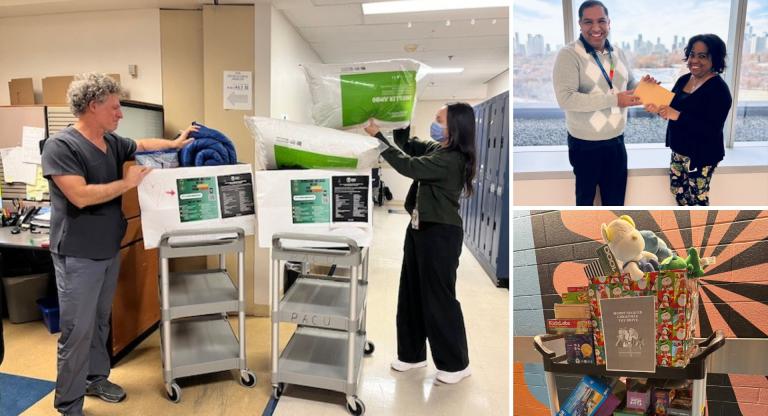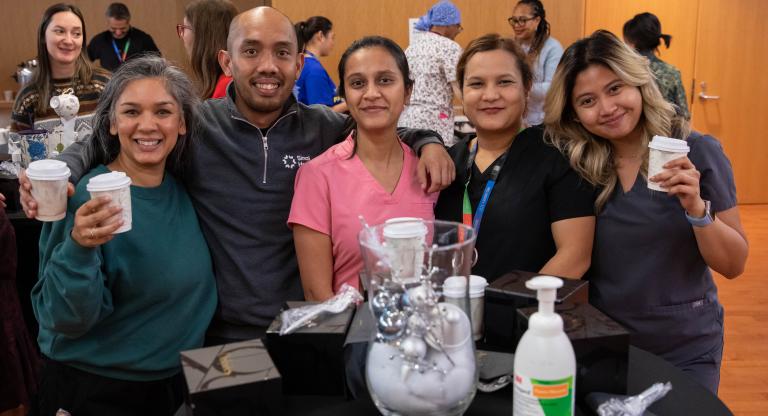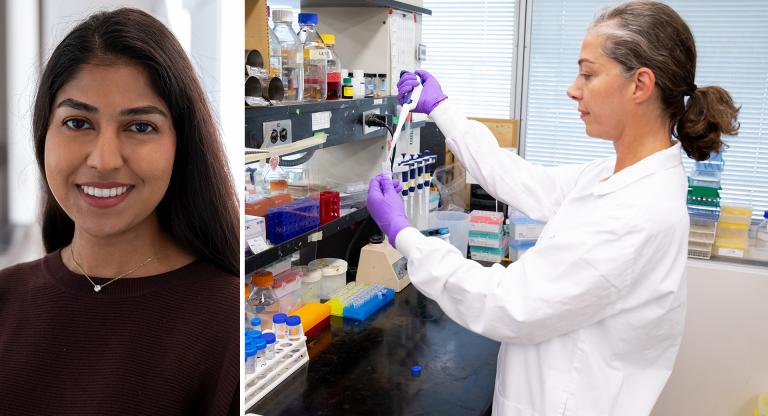Championing flu vaccination for patients in the hospital

Our staff influenza vaccination campaign is a visible sign to Sinai Health that flu season is approaching. But less visible, is the work that happens throughout flu season to ensure that our inpatients also have the opportunity to get the flu shot while they are in the hospital.
“Hospital patients are not only vulnerable, but also at risk of spreading the flu to other patients, caregivers, and staff members. Flu vaccination is an opportunity to try to protect not only themselves, but also the people around them", says Dr. Jordan Pelc, a Hospitalist who works at both Mount Sinai Hospital and Bridgepoint Active Healthcare.
Jordan has become a champion of influenza vaccination for patients. “Part of my role is caring for longer-stay hospital patients. These patients are particularly important for us to focus on for vaccination as they have a larger opportunity to get or spread influenza while under our care.”
In the fall and throughout flu season, Jordan works closely with the Infection Prevention and Control team to ensure that patients under his care are offered the flu shot whenever it’s appropriate.
James Wong, an Infection Prevention and Control Practitioner who works with Jordan and Mount Sinai says it’s a welcome collaboration. “Whether you are staff, patient or visitor, the flu shot is the best form of protection against influenza. We aim to help ensure as many people as possible have the opportunity to get it because the more people are vaccinated, the better we’re all protected.”
But, James notes that despite the flu shot being important, preventing influenza takes a multifaceted approach. “The vehicles we drive on the road don’t just have one safety feature. Air-bags, winter tires, blind-spot monitoring, auto-braking, etc. are all examples of different safety features, and the more of these you have, the better protected you will be. It is no different in preventing transmission of influenza. Getting your flu shot, wearing a mask, not coming to work ill, identifying patients with new respiratory symptoms, performing hand hygiene are all examples of what you can do to best protect our patients, our loved ones and ourselves” says James. “These are things that everyone can do, including, visitors, staff, physicians and volunteers. We’re always working to educate and ensure people have the information and tools they need to best protect others and themselves.”












